This is a followup on the cast bullet story, focused specifically on the .300 Weatherby cartridge in a Mk V rifle.
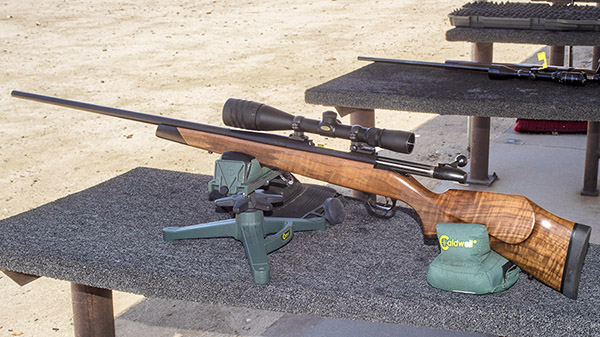
I tried a few loads previously and I tried to get a little better results for this blog, but it seems I already had the keys to the kingdom. Here’s the bottom line first:
-
- I didn’t see much difference between the two bullets I tried (a 180-grain gas-checked bullet and 20.0 grains of Trail Boss, and a 210-grain Montana Bullet Works gas checked bullet with the same powder charge).
- 20.0 grains of Trail Boss works well. I tried higher charges, but they weren’t as accurate.
- Cast bullets in the .300 Weatherby won’t give you a tackdriver at 100 yards, but it will keep the holes in the black. I was averaging 2 1/2-inch groups at 100 yards with the loads mentioned above.
I experimented with two bullets, the 180-grain design mentioned above that I get from a local caster, and Montana Bullet Works 210-grain cast bullet. The Montana bullet is longer and has a more pointed tip; the 180-grain has a blunt nose. I think I showed you these photos before, but I’ll include them here again for easy reference.
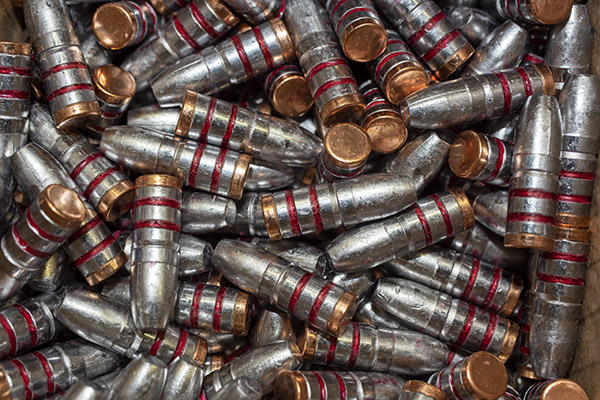

Neither bullet leaded the barrel with any of the loads I tried. The Montana bullets don’t appear to have a much of a step to crimp on like the locally-sourced 180-grain bullets. I crimped the Montana bullets just above the top grease groove. The blue lube you see north of the case mouth is just lube that had smeared above the top groove. I tried some with the loads as you see them above (with blue lube smeared above the crimp), and some where I wiped the lube clean after crimping; that had no effect on group size.

The Montana bullet needed to go deep into the case neck to cover all the grease grooves. This wouldn’t be an issue for my target shooting because they are transported in a box, protected, before I shoot them. The guys that know about this stuff say if you’re going to hunt with them, you shouldn’t leave any grease grooves exposed because they can pick up grit. So I made mine like I was going to hunt with them. Someday maybe I will. There might be a pig out there with my name on it.
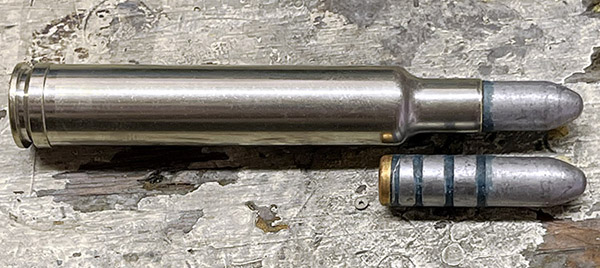
Note that that the base of the Montana bullet is well below the neck inside the case. I thought that might cause the gas check to come off when these rounds are fired. That didn’t seem to be happening with mine and my friends who know about such things tell me that there’s more important stuff to worry about.
The data below are all for 100-yard results with 20.0 grains of Trail Boss, The Montana bullets have a slight edge, but not by much, and I’ve only tried the one load (20.0 grains of Trail Boss) with them. I had previously found 20.0 grains to be best with the 180 grain bullets.
 I’ll probably vary the Trail Boss loads a bit with the Montana bullets at some point in the future.
I’ll probably vary the Trail Boss loads a bit with the Montana bullets at some point in the future.
I tried SR 4759, which has always done extremely well for me shooting cast bullets in other rifles. I tried two loads (22.0 grains, and 27.0 grains). Neither did nearly as well as the Trail Boss loads. I didn’t record the group sizes, but take my word on this: They were huge. The Lyman manual shows going up into the mid-30s (i.e., 35 grains) with SR 4759 and cast bullets in this cartridge; maybe that would be better. But I’m good enough with Trail Boss, and that’s where I’m going to hang my hat.
I have other powders I could try with cast bullets in the .300 Weatherby, but I think I have my load, and that’s 20.0 grains of Trail Boss with either 180-grain or 210-grain cast bullets. There’s not much difference between the two, and accuracy is okay at 100 yards (not great, but good enough to practice with). One more note, and that’s that I used CCI 200 primers in all loads, and I crimped all loads.
It sure is a lot easier shooting cast bullets in this rifle than it is shooting 300 Weatherby factory-level loads. It completely changes the character of the rifle and the shooting experience. Shooting 20 rounds of factory ammo off the bench in a .300 Weatherby is punishing, and unless you’re a self-styled Facebook expert, it’s time to call it a day. With cast bullet loads, though, I can go through 50 rounds and wish I had more. And the cast bullet savings are awesome. I did a little spreadsheet work to determine what a .300 Weatherby cartridge costs loaded with a cast bullet, and by my calcs, I figure I’m sending about $0.29 downrange every time I pull the trigger. A box of 20 rounds of 300 Weatherby (assuming you can find any) goes for around $80 to $100. At the high end, that’s $5.00 per round. Granted, you could knock down a T-Rex with factory ammo, but we don’t get too many of those at the West End Gun Club. I loaded 90 rounds this morning, so I guess I’m wealthy by Weatherby ammo standards.
More Tales of the Gun and Weatherby stories are here!
Never miss an ExNotes blog…sign up here for a free subscription!

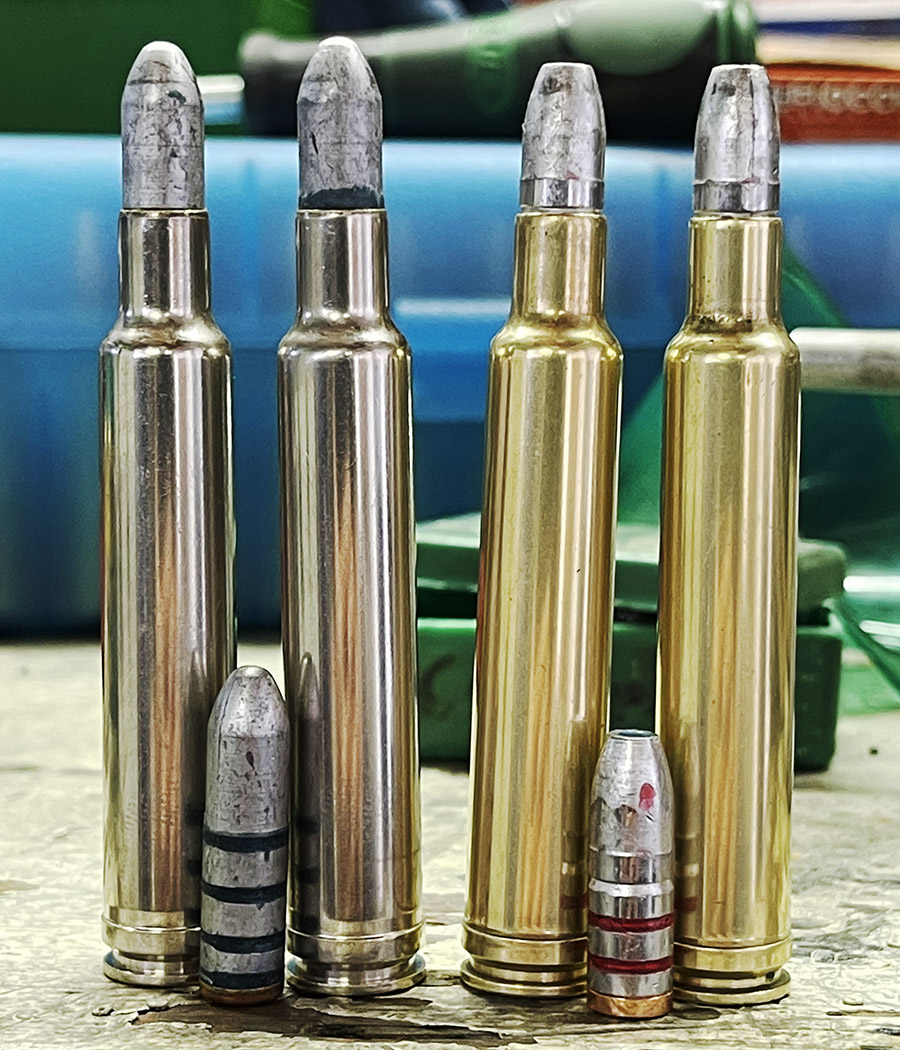
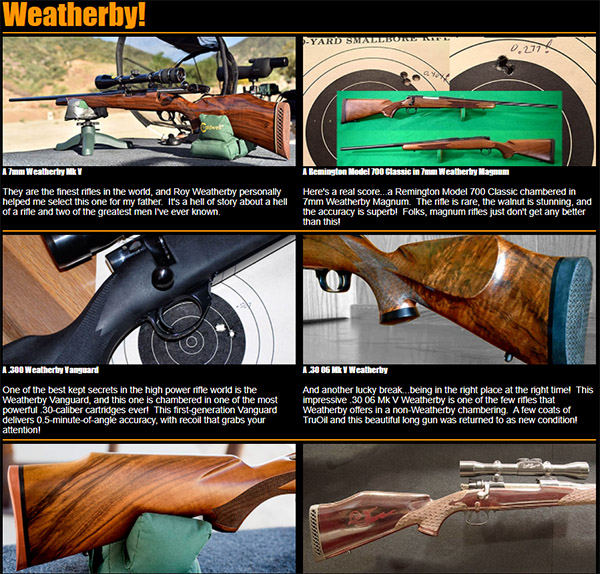
Dumb question but I’d thought I’d ask. Not a hunter by any means. I’m wondering Joe about the blue lube on the cast bullets. If you shot a hog or other critter and wanted to eat the meat does the lube contaminate the meat at all?
Not that I’ve ever heard of, Rob.
Joe, looks like you like the Kawasaki Drifter from your previous post, I would like to send you a photo of my setup as I believe it has a lot of the mods you mentioned you would make if you had one. Shoot me an email I could forward them to, I didn’t see on listed
Thanks, Dan. Mail is info@exhaustnotes.us.